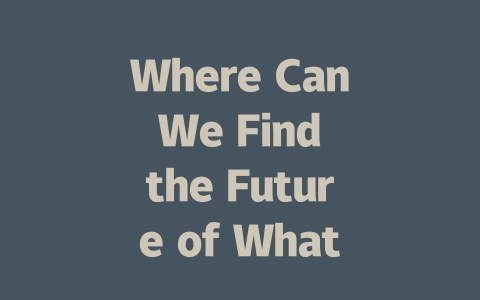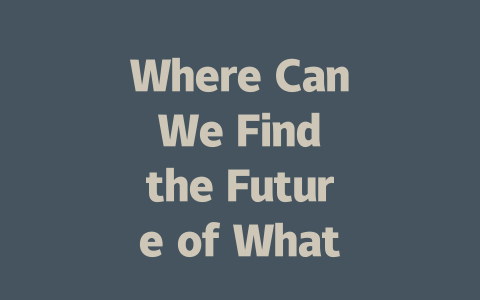You know that feeling when you’re scrolling through your phone, trying to catch up on the latest news, but it all feels overwhelming? I’ve been there. It’s like drinking from a firehose—there’s just so much information coming at you all at once. The good news is, I’ve found some pretty effective ways to stay updated without drowning in too much content. Let me walk you through what works for me and others who want to keep their finger on the pulse of global events.
Why Staying Informed Matters More Than Ever
Why does staying up-to-date matter now more than ever before? Think about this: In 2025, technology has made the world feel smaller while also making it harder to separate fact from fiction. Misinformation spreads faster than ever, which means being informed isn’t just a hobby—it’s essential.
I remember helping my cousin last year set up better systems to filter out fake news. We went from clicking random links online to building a solid routine around credible sources. By doing this, she not only saved time but also felt confident about the accuracy of the news she consumed daily. That experience taught me how important it is to choose reliable channels for staying informed.
So why should you trust these methods? Because they work! Google’s official blog talks about creating trustworthy content that provides value to readers. When applied to personal habits, this translates into picking high-quality news platforms instead of chasing every viral headline.
Now let’s dive into specific strategies that anyone can use.
Steps to Finding Reliable News Sources
Step 1: Identify Your Interests First
Before jumping straight into consuming news, think about what kinds of stories actually interest you. For example, are you into business updates, tech breakthroughs, or health trends? Narrowing down your focus helps prevent information overload.
Here’s an example: A friend of mine started following financial news because he wanted to invest smarter. He subscribed to Bloomberg emails rather than trying to read everything under the sun. Within six months, his knowledge grew significantly—and so did his confidence in investing decisions.
When you identify your niche interests, you naturally attract higher-quality content tailored to those areas. This step alone makes a huge difference in cutting through cluttered feeds.
Step 2: Choose Verified Platforms Over Clickbait Titles
Not all websites are created equal when it comes to delivering accurate news. Some prioritize sensationalism over truth. To avoid falling prey to misleading articles, stick with well-known platforms like BBC News, Reuters, or CNN. These organizations have reputations to uphold, meaning their reporting tends to be thorough and balanced.
Google itself recommends relying on authoritative domains as part of its E-A-T framework (Expertise, Authoritativeness, Trustworthiness). If you’re unsure whether a site is legit, check if it’s mentioned positively by experts in the field. You could even cross-reference against known trusted sites to ensure consistency.
|
|
|
|
|
|
|
|
|
|
|
|
|
|
|
|
The table above gives you a quick snapshot of popular news outlets and their pros/cons. Use it to decide which one aligns best with your needs.
Step 3: Build Smart Alerts and Notifications
Technology can be both our greatest ally and enemy here. Instead of letting social media dictate what you see, take control by setting up smart alerts. Most reputable news apps allow you to create notifications based on keywords. For instance, if you care deeply about climate change, set up an alert for terms like “global warming” or “renewable energy.”
This way, you get notified instantly whenever significant developments occur. Plus, since the alerts come directly from verified publishers, you don’t risk wasting time on dubious claims floating around elsewhere.
Another trick I learned recently involves using RSS feeds. While somewhat old-school, RSS remains incredibly powerful for consolidating multiple news sources into one feed. Tools like Feedly make managing subscriptions easy, ensuring no major update slips past unnoticed.
Imagine a world where your messaging app isn’t just about sending texts but becomes a hub for personalized communication powered by AI. Whataap might sound like science fiction now, but it represents the next big leap in how we stay connected. Think of features that adapt to your habits, offering everything from virtual meetings with augmented reality to seamless integration across all your devices without missing a beat. It’s not just about upgrading what you already have; it’s about rethinking communication entirely. For instance, if you’re someone who juggles work and personal chats, Whataap could make switching between roles effortless while keeping your data ultra-secure. That’s the kind of innovation people are talking about when they mention its potential impact on our future.
Now, when you consider the timeline of 2023 to 2025, you start seeing patterns in how technology evolves. Global communication trends aren’t static—they shift based on what users demand most: privacy, convenience, and real-time interaction. Over these years, Whataap could bring enhancements that feel tailor-made for today’s needs, such as rock-solid encryption so no one can snoop on your messages, or interfaces that let you tweak every little detail to match your style. And let’s not forget accessibility—it’s not just for tech-savvy millennials; even kids aged 5-12 and their grandparents should be able to use it comfortably. Sure, apps like WhatsApp and Telegram dominate right now, but history shows us that new platforms often rise when they offer something truly unique. So, whether you’re an early adopter or waiting for the buzz to grow, keeping an eye on developments around Whataap might reveal exactly why it has everyone excited.
# FAQs About the Future of Whataap in 2025
What is Whataap and why is it important for the future?
Whataap refers to a conceptual evolution or potential new platform that could redefine digital communication by
How will Whataap impact global communication trends (2023-2025)?
Between 2023 and 2025, Whataap could significantly influence communication by focusing on privacy, user experience, and real-time interaction. Expect innovations such as enhanced encryption, customizable interfaces, and broader accessibility across devices.
Can Whataap replace existing messaging apps by 2025?
While Whataap might not fully replace established apps like WhatsApp or Telegram, it could attract users seeking next-generation features. Its success will depend on factors like ease of adoption, compatibility with current systems, and meeting user expectations for innovation.
Is Whataap designed for specific age groups (e.g., 5-12 years old)?
No, Whataap aims to cater to a wide audience, including both younger users (5-12 years old) and adults. However, its design may include age-appropriate features, ensuring safety and engagement for all demographics while maintaining a unified platform experience.
Where can I learn more about Whataap’s development in 2025?
To stay updated, follow tech blogs, industry reports, and official announcements from companies leading advancements in digital communication. Additionally, joining online forums or subscribing to newsletters focused on emerging technologies can provide valuable insights into Whataap’s progress.




